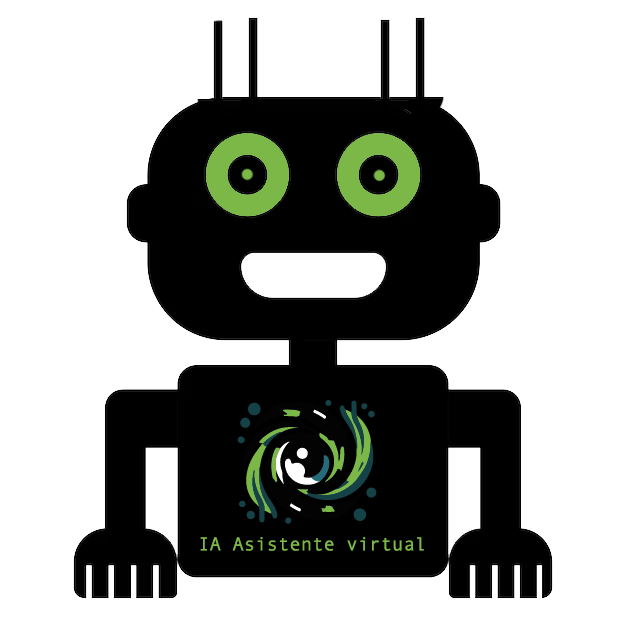Digitization of Exhibition Spaces
Educational and Cultural Dissemination Tool in the Connected Society
DOI:
https://doi.org/10.62161/revvisual.v17.6058Keywords:
Digitization, Exhibition spaces, Visual culture, Social media, Augmented reality, Cultural heritageAbstract
The digitization of exhibition spaces transforms the perception and access to cultural and artistic content, expanding access to exhibitions and redefining the interaction between users, technology and culture. The DEXED project proposes a standard methodology for digitizing exhibitions, integrating immersive technologies (360º tours, augmented reality, interactive repositories). DEXED aims to enrich both virtual and in-person experiences, establishing a replicable model. Social media amplifies the visibility of cultural content and encourages active public participation. DEXED connects technology, art, literature, and education in a dynamic digital ecosystem, transforming exhibitions into interactive and participatory experiences.
Downloads
Global Statistics ℹ️
|
0
Views
|
0
Downloads
|
|
0
Total
|
|
References
Calise, A. (2023). Inhabiting the museum: A history of physical presence from analog to digital exhibition spaces. AN-ICON. Studies in Environmental Images, 2 (II), 56-73.
Colmenares, A. M. y Piñero, M. L. (2008). La investigación acción: una herramienta metodológica heurística para la comprensión y transformación de realidades y prácticas socio-educativas. Laurus, 14(27), 96-114.
Conde Melguizo, R. (2021). 4+ 2 VDJ: Diseño de norma de jugabilidad para el diseño de videojuegos. Lúdicamente, 10(19).
Conde Melguizo, R., y Blanco Marcos, J. (2025). Digitalization of cultural heritage as a didactic methodology: The case of Residencia de Estudiantes. Street Art & Urban Creativity, 11(1), 1-14.
Conde Melguizo, R., Blázquez, F., Serrano, J. A., y Nogueira, P. (2024). DEED. Diseño de espacios virtuales para objetivos educativos y de divulgación [Resumen de presentación en conferencia]. III Foro Red de Investigadores en Diseño, InfoRED, 7, Universidad de Palermo, Argentina. https://www.palermo.edu/dyc/red_investigacion/PDFs/infoRED_7Feb2024.pdf
De Marco, R. (2024). Integration of digital repositories and spatial design within the metaverse: The evaluation of features and narratives to set learning environments on cultural heritage. The International Archives of the Photogrammetry, Remote Sensing and Spatial Information Sciences, 48, 147-154.
Eve. (2023, 23 noviembre). Arte digital e inmersión en museos. EVE Museos + Innovación. https://bit.ly/3WG373b
Feige, D. M. (2019). The digitalization of culture and the culture of digitalization. En H. G. Rat für kulturelle Bilding (Ed.), Contemporary Research Topics in Arts Education (pp. 52-56). Essen: Rat für kulturelle Bildung.
Gafar, I. A., Arif, Z. y Syefudin, S. (2022). Systematic literature review: Virtual tour 360 degree panorama. International Journal of Engineering, Business and Social Science, 1(1). 1-9.
González, R., Llopis, L. y Gasco, J. (2014). Social networks in cultural industries. Journal of Cultural Economics, 38(3), 223-245.
Karaoğlu, M. (2017). ¿Cómo ha cambiado el Arte Digital los espacios expositivos? Interartive. http://bit.ly/40DmL11
Kulesz, O. (2016). El impacto de las tecnologías digitales en la diversidad de las expresiones culturales de España y Latinoamérica. Informe UNESCO.
Li, J., Wilder, W., Ochiai, Y. y Fauzi, M. A. (2023). A bibliometric anlaysis of immersive technology in museum exhibitions: Exploring user experience. Frontiers in Virtual Reality, 4, 1-16.
Nielsen, J. (1994). Enhancing the explanatory power of usability heuristics. En Proceedings of the SIGCHI Conference on Human Factors in Computing Systems (pp. 152-158). ACM. https://doi.org/10.1145/191666.191729
Poole, D. (2011). Digital Transitions and the Impact of New Technology on the Arts. https://bit.ly/40SbUSj
Rodríguez, N., Heras, D., Sanchís, A. & Lleonart, M. (2019). Diseño digital transmedia para espacios expositivos. Museo. Imagen. Sentidos, 14, 393-412.
Rojas, V. (2021). Digitalización de los museos: la cultura se conecta con el público. Telefónica. https://bit.ly/3WJHpeL
Santacana Mestre, J. (2015). La digitalización de la cultura y sus repercusiones en el museo y en el patrimonio. Museos.es: Revista de la Subdirección General de Museos Estatales, 11, 82-96. https://bit.ly/4jvuEhE
Szlifman, M. (2022). Estrategias curatoriales para expografías virtuales. Cómo pensar alternativas por fuera de la hipermediatización. Contemporânea - Revista Do PPGART/UFSM, 3(6), e5. https://doi.org/10.5902/2595523361847
Tortosa, R., Caerol, R., Escribano, B. y Rodríguez, N. (2021). Propuestas de realidad virtual y aumentada para el museo del siglo XXI. Universitat Politècnica de València. https://dx.doi.org/10.4995/CIMED21.2021.12460
Wang, F., Zhang, Z., Li, L. y Long, S. (2024). Virtual reality and augmented reality in artistic expression: A comprehensive study of innovative technologies. International Journal of Advanced Science and Applications, 15(3), 641-649.
Wang, M. y Fang, Y. (2024). Culture and social networks. En M. J. Gelfand y M. Erez (Eds.), The Oxford Handbook of Cross-Cultural Organization Behavior (pp. 455-477). Oxford University Press.
Wang, Z. (2024). The fusion of virtual and reality: The innovation road of exhibition industry driven by science and technology. Advances in Economics, Management and Political Sciences, 8(8), 187-192.
Yang, H., y Guo, L. (2023). Evolution of exhibition space strategies in smart museums: A historical transition from traditional to digital. Herença, 7 (1), 1-11.
Downloads
Published
How to Cite
Issue
Section
License
Copyright (c) 2025 Authors retain copyright and transfer to the journal the right of first publication and publishing rights

This work is licensed under a Creative Commons Attribution-NoDerivatives 4.0 International License.
Those authors who publish in this journal accept the following terms:
-
Authors retain copyright.
-
Authors transfer to the journal the right of first publication. The journal also owns the publishing rights.
-
All published contents are governed by an Attribution-NoDerivatives 4.0 International License.
Access the informative version and legal text of the license. By virtue of this, third parties are allowed to use what is published as long as they mention the authorship of the work and the first publication in this journal. If you transform the material, you may not distribute the modified work. -
Authors may make other independent and additional contractual arrangements for non-exclusive distribution of the version of the article published in this journal (e.g., inclusion in an institutional repository or publication in a book) as long as they clearly indicate that the work was first published in this journal.
- Authors are allowed and recommended to publish their work on the Internet (for example on institutional and personal websites), following the publication of, and referencing the journal, as this could lead to constructive exchanges and a more extensive and quick circulation of published works (see The Effect of Open Access).













